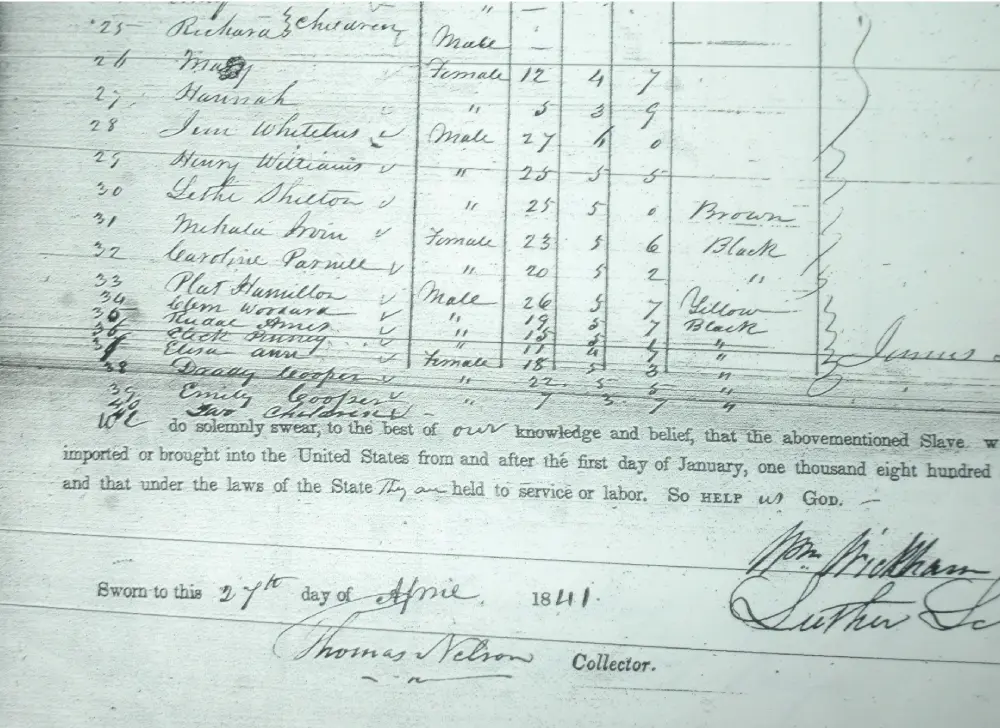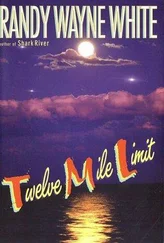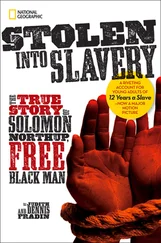Solomon Northup - Twelve Years a Slave
Здесь есть возможность читать онлайн «Solomon Northup - Twelve Years a Slave» — ознакомительный отрывок электронной книги совершенно бесплатно, а после прочтения отрывка купить полную версию. В некоторых случаях можно слушать аудио, скачать через торрент в формате fb2 и присутствует краткое содержание. Жанр: unrecognised, на английском языке. Описание произведения, (предисловие) а так же отзывы посетителей доступны на портале библиотеки ЛибКат.
- Название:Twelve Years a Slave
- Автор:
- Жанр:
- Год:неизвестен
- ISBN:нет данных
- Рейтинг книги:5 / 5. Голосов: 1
-
Избранное:Добавить в избранное
- Отзывы:
-
Ваша оценка:
- 100
- 1
- 2
- 3
- 4
- 5
Twelve Years a Slave: краткое содержание, описание и аннотация
Предлагаем к чтению аннотацию, описание, краткое содержание или предисловие (зависит от того, что написал сам автор книги «Twelve Years a Slave»). Если вы не нашли необходимую информацию о книге — напишите в комментариях, мы постараемся отыскать её.
Twelve Years a Slave
Twelve Years A Slave
An insightful introduction by David Fiske reveals the world into which Northup was born, the kidnapping phenomenon to which he fell victim, and the legacy of slavery today.
Twelve Years a Slave — читать онлайн ознакомительный отрывок
Ниже представлен текст книги, разбитый по страницам. Система сохранения места последней прочитанной страницы, позволяет с удобством читать онлайн бесплатно книгу «Twelve Years a Slave», без необходимости каждый раз заново искать на чём Вы остановились. Поставьте закладку, и сможете в любой момент перейти на страницу, на которой закончили чтение.
Интервал:
Закладка:
During the period that Northup was lecturing – the mid-1850s – records show that he sometimes suffered financial difficulties. And the evidence is that he did not reside with his family full time. Given what he had gone through in the South, we can guess that it would have been difficult for him to simply slip back into family life. By about 1861, according to letters from the son of an anti-slavery pastor, Northup was working with the clergyman to help runaway slaves reach safety in Canada – the so-called “Underground Railroad.” The letters indicate that Northup was still alive at the time of Lincoln's Emancipation Proclamation in 1863 – because at the time he reportedly visited the pastor in Vermont.
WHAT HAPPENED TO NORTHUP?
Beyond 1863, no traces of Northup have surfaced in newspapers or official records. A listing of inhabitants of New York State in 1875 includes his wife, along with other family members – but not Northup. According to the record, his wife is widowed, so Northup seemingly was deceased by that year. (Earlier census records had shown the wife to be a married woman.)
What Northup may have been doing during the Civil War remains a mystery. It's possible that his money problems continued, and he perhaps wandered about seeking work, dying penniless in some unfamiliar place. Perhaps he pursued a different vocation. He wrote very positively about agriculture; possibly he took up farming. His autobiography does not give the impression that he was the retiring sort. Despite his stated hope, once he had achieved his freedom, “henceforward to lead an upright though lowly life,” it is hard to imagine this man of action quietly sitting at home in some Northern state, merely reading about the war in newspapers. Might he have gone south, seeking out his luckless slave friend Patsey? Might he have in some way provided assistance to the Union army (which had a presence in central Louisiana as early as 1862)? As a scout – or a spy – Northup could have provided valuable information. He knew the landscape, and he also knew how to play the part of a slave, so could have gathered information without being noticed.
Perhaps a packet of letters or old newspaper clippings will be found in an attic somewhere, and the Northup story can have its proper ending. But his ultimate fate – how, when, and where he died – may never be learned.
ACCURACY AND AUTHORSHIP
Twelve Years a Slave is filled with so many details (in some cases, inconsequential ones) that is hard to believe claims could be made that the narrative was fabricated – and yet, the charge has occasionally been made. The effort that would have been required to gather all the information about individuals, locations, and methods described by Northup would have been immeasurable. It would have been easier to simply write the book as a novel.
Many details Northup included can be, and have been, verified through other sources. I could cite a number of facts that support Northup's account as being based on reality, but will merely provide one which I believe clinches the case.
Northup tells how, while he was aboard the slave-laden brig Orleans , it anchored near the city of Norfolk, Virginia. A boat set out from shore, and several more slaves were transferred to the Orleans . The ship continued its fateful trip to Louisiana, and Northup tells us that a slave, Robert, died along the way and was buried at sea. In those days, the United States government kept records showing what slaves ships were transporting between domestic ports. The so-called “slave manifest” for the Orleans is preserved in the National Archives. There are two pages: one lists the slaves who had departed Richmond, Virginia (including Northup, under the name Plat Hamilton); the second page gives the names of those taken aboard at Norfolk. The names on the manifest do not exactly match the ones Northup gives in his book – but a number do match. The second page (which at the top has Richmond crossed out, and Norfolk written in) includes the notation, added once the ship arrived at New Orleans: “Examin'd and found Correct with the exception of Robert Jones who Capt Wickham states died on the Passage.” It is inconceivable that, had some parties prepared a falsified book, they would have managed (or even bothered) to seek out an obscure government document that showed the Orleans took on extra slaves at Norfolk, and that Robert had passed away in the course of the voyage.
 Ship's manifest from the Orleans, which transported Northup south to his life as a slave. He is listed as “Plat Hamilton,” male, age 26, height 5’7”, skin colour “yellow.”
Ship's manifest from the Orleans, which transported Northup south to his life as a slave. He is listed as “Plat Hamilton,” male, age 26, height 5’7”, skin colour “yellow.”
The question of authorship has also arisen over time. Did Northup pen the narrative, or was it David Wilson? Wilson has sometimes been called the book's “ghost writer,” yet he is clearly identified as the book's editor (even supplying his own preface). Wilson explains that the content of the book came from Northup, in response to questions from Wilson. We know that Wilson authored other books, and a comparison of the writing style in Twelve Years a Slave with those titles indicates much more dry and matter-of-fact language compared to the Northup book, which is highly descriptive. Though it's possible that the difference is due to the intervention of an editor at the publishing house, it is more likely that this is simply Northup's style. We know that, when he lectured, he was a dramatic storyteller who did not require Wilson's presence on stage to captivate an audience.
Another clear sign of Northup's voice in the book are the sometimes tortuously detailed detours from the main narrative. In Chapter XIV, for example, he devotes several paragraphs to how he designed and built a fish trap. Throughout the book, he goes into great detail in explaining agricultural practices in Louisiana. It is hard to imagine that anyone besides Northup would have demanded inclusion of such secondary topics.
Finally, there is the matter of Northup's motivation for putting his story to paper. He states this very clearly at the book's beginning: “I can speak of Slavery only so far as it came under my own observation – only so far as I have known and experienced it in my own person. My object is, to give a candid and truthful statement of facts: to repeat the story of my life, without exaggeration …” Although incidents portrayed by Northup are sometimes used as evidence of what slavery was like throughout the United States, it was not his intention to present a wide overview of slavery – whose practices differed greatly from one region to the next.
As the veracity of slave narratives go, Northup's has one clear advantage. Because he was kidnapped into slavery, instead of having been born into it, he has less reason to overstate the horrors of the trade. Most other narratives were written by people who had fled slavery. They ran away and, in doing so, they were breaking the laws of the time. To justify why they had absconded, they needed to give as evil an image of slavery as possible. Northup did not need to do that, and could afford, at times, to make certain aspects of his experience sound almost positive. Indeed, along with chilling portraits of men like James Burch (slave dealer), John Tibeats (carpenter overseer who tried to kill Northup several times) and, of course, Edwin Epps (brutal, drunken plantation master), Northup is careful to give accounts of better individuals in the slave system, including William Ford (his initial “owner” who treated his slaves kindly and who became a Baptist preacher), and Mr. Chapin, a white overseer who saved Northup from being lynched and hanged by Tibeats.
Читать дальшеИнтервал:
Закладка:
Похожие книги на «Twelve Years a Slave»
Представляем Вашему вниманию похожие книги на «Twelve Years a Slave» списком для выбора. Мы отобрали схожую по названию и смыслу литературу в надежде предоставить читателям больше вариантов отыскать новые, интересные, ещё непрочитанные произведения.
Обсуждение, отзывы о книге «Twelve Years a Slave» и просто собственные мнения читателей. Оставьте ваши комментарии, напишите, что Вы думаете о произведении, его смысле или главных героях. Укажите что конкретно понравилось, а что нет, и почему Вы так считаете.












